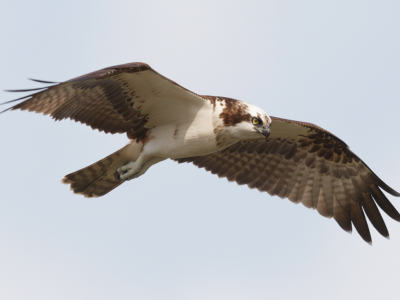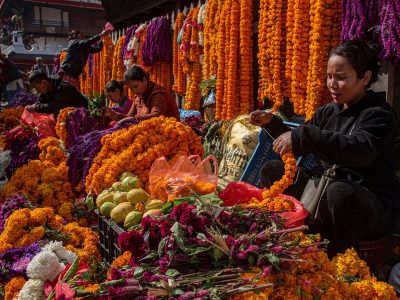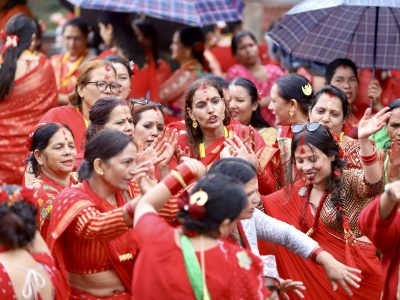INDRA JATRA (September 6 to September 13)
Indra Jatra: Kathmandu’s Most Vibrant Festival – A Guide by Kabru Adventure Holidays
Indra Jatra, one of Nepal’s most spectacular and lively festivals, is celebrated every year in the heart of Kathmandu. Dedicated to Lord Indra, the God of Rain and King of Heaven in Hindu mythology, this festival marks the end of the monsoon season. It is a time when locals pray for good harvests, prosperity, and protection from natural calamities, blending religious devotion with joyous cultural celebration.
During Indra Jatra, Kathmandu’s streets burst into vibrant energy and color. The air resonates with the rhythmic beats of traditional drums and the deep, ceremonial sounds of long horns. Masked Lakhe dancers—representing protective spirits—perform mesmerizing dances, spinning and leaping through the crowd to entertain and ward off evil. Elaborate chariots, adorned with flowers, intricate carvings, and colorful fabrics, carry sacred images of deities, including the living goddess Kumari, parading through the city as devotees line the streets to receive her blessings.
The festival is not only a religious event but also a lively social occasion. Families, neighbors, and visitors from across Nepal gather together, enjoying traditional foods, folk music, and impromptu street performances. Vendors sell local delicacies, artisans display their crafts, and performers reenact legendary tales from Hindu mythology, offering a rich sensory experience.
Indra Jatra also highlights the harmony between Hinduism and Buddhism in Kathmandu. Temples, stupas, and courtyards come alive with ceremonial rituals, while public celebrations create a space for collective joy, devotion, and cultural pride. For travelers, the festival is a unique opportunity to witness centuries-old traditions, experience the living culture of the city, and feel the spirit of Kathmandu at its most festive and sacred moment.
Historical Background
Indra Jatra dates back to the Malla period in the 10th century and is believed to have been initiated by King Gunakamadeva when he founded Kathmandu. Originally established to honor Lord Indra and seek blessings for abundant rainfall and harvests, the festival has evolved over centuries into a grand cultural spectacle.
During the Malla era, the festival became closely tied to the worship of the living goddess Kumari, who is paraded through the streets so devotees can receive her blessings. Masked dances, such as those performed by the Lakhe dancers, and the pulling of sacred chariots carrying deity images, further enriched the celebration.
Indra Jatra is also a significant social event, bringing together communities across the Kathmandu Valley. Despite political changes and modernization, the festival has preserved its core rituals, sacred ceremonies, and street performances. Today, it stands not only as a religious observance but also as a living testament to Kathmandu’s artistic heritage, history, and communal spirit.
Key Highlights of Indra Jatra
- Raising of the Linga (Yosin or Indra Dhwaja): The festival begins with the erection of a tall ceremonial wooden pole at Basantapur Durbar Square. This symbolic act represents Lord Indra’s presence on earth and marks the official start of the festival. The pole is decorated with colorful fabrics and religious symbols, attracting crowds who gather to witness the ritual.
- Kumari Jatra (Chariot Procession): The Living Goddess Kumari, along with deities Ganesh and Bhairab, is paraded through the streets of Kathmandu in elaborately decorated chariots. Thousands of devotees follow the procession, chanting prayers and seeking blessings. The chariots traverse historic squares, giving spectators a close glimpse of this centuries-old tradition.
- Bhairab Display: Giant masks of Bhairab, a fierce manifestation of Lord Shiva, are displayed at key squares. Sacred beer (aila) is poured from Bhairab’s mouth, and tasting it is considered highly auspicious. This display draws devotees who pay homage and participate in ritual offerings.
- Lakhe Dance: Masked dancers perform the traditional Lakhe dance, representing benevolent demons. The energetic and rhythmic movements, combined with traditional Newari music, captivate audiences. Each Lakhe has a distinct personality and style, some playful, others more dramatic, creating a rich visual spectacle.
- Pulukisi (Elephant Dance): A comical and entertaining dance where a performer dons a white elephant costume, representing Airawat, Lord Indra’s mount. The dance brings laughter and joy to the crowd, balancing the spiritual solemnity of the festival with lighthearted entertainment.
- Devi and Ganesh Rituals: Local residents and priests conduct rituals in honor of various deities, especially Goddess Taleju and Lord Ganesh. Offerings, prayers, and ceremonial music are performed in the temples, allowing devotees to connect spiritually during the festival.
- Daboo Jatra (Masked Parade): In addition to Lakhe dancers, other masked characters representing spirits, demons, and mythological figures parade through the streets. Each performance narrates legends and folklore, preserving cultural stories passed down through generations.
- Cultural Performances and Folk Music: Alongside religious activities, performers showcase traditional Newari songs, dances, and folk music. Drums, flutes, cymbals, and other indigenous instruments fill the streets with festive sounds.
- Street Festivals and Market Stalls: Temporary stalls line the streets, offering local foods, handcrafted goods, religious items, and souvenirs. Visitors can sample traditional delicacies and enjoy the bustling market atmosphere while exploring the cultural richness of Kathmandu.
- Community Gatherings and Feasts: Families and neighborhoods organize communal feasts and celebrations. Sharing food, singing, and dancing together highlights the social unity fostered by the festival.
- Illuminations at Night: In the evenings, streets, squares, and temples are decorated with lights and lamps. The illuminated processions, paired with ceremonial fireworks, create a magical and spiritual ambiance that enchants both locals and tourists.
Cultural and Religious Significance
Indra Jatra is far more than a religious ceremony; it is a vivid celebration of Kathmandu’s rich Newar cultural heritage and the harmonious coexistence of Hinduism and Buddhism. Hindus worship Lord Indra, the God of Rain, to pray for timely monsoons, good harvests, and prosperity. Buddhists, on the other hand, honor the festival as a remembrance of Lord Avalokiteshvara, the Bodhisattva of Compassion. The simultaneous participation of both communities reflects Nepal’s centuries-old tradition of cultural inclusivity and spiritual unity.
The festival also highlights the Newar people’s devotion to art, music, and performance. Elaborate masks, chariots adorned with sacred images, and intricate dances are all expressions of faith and identity. Through these rituals, locals preserve legends, folklore, and religious stories passed down through generations. For visitors, Indra Jatra offers a unique opportunity to witness living heritage in action—the blending of devotion, storytelling, artistry, and communal celebration.
Best Time to Experience
In 2025, Indra Jatra will be celebrated from September 6 to September 13 (Bhadra 21–28 in the Nepali calendar). The festival lasts for eight days, typically beginning with the erection of the ceremonial pole at Basantapur Durbar Square. During this period, Kathmandu transforms into a city-wide stage of cultural expression. Streets, squares, and temples are alive with drumbeats, masked dances, and illuminated chariots.
For photographers and culture enthusiasts, this is a perfect time to capture the vibrant energy, intricate Newari architecture, and the flowing traditions of centuries-old rituals. Mornings are filled with sacred processions and temple ceremonies, afternoons with dances and community gatherings, and evenings with illuminated chariots, devotional music, and colorful lights, creating a magical and unforgettable atmosphere.
Travel with US
Kabru Adventure Holidays offers curated festival tours that allow you to experience Indra Jatra up close. Our packages include guided visits to Kathmandu Durbar Square, cultural insights from local experts, and opportunities to witness the Kumari procession, Lakhe dances, and traditional rituals. We ensure comfortable accommodations, expert guidance, and a memorable cultural journey.
Experience the Festival with Kabru Adventure Holidays
Kabru Adventure Holidays invites you to immerse yourself in the sights, sounds, and sacred traditions of Indra Jatra. From ceremonial temple worship to vibrant street performances, this festival offers an unforgettable cultural experience and a unique window into the spiritual and social heart of Kathmandu.
Join Kabru Adventure Holidays to witness Indra Jatra – a vibrant celebration of faith, culture, and community spirit in the heart of Kathmandu.







Recent Blog Posts

- November 9, 2025

- October 15, 2025



